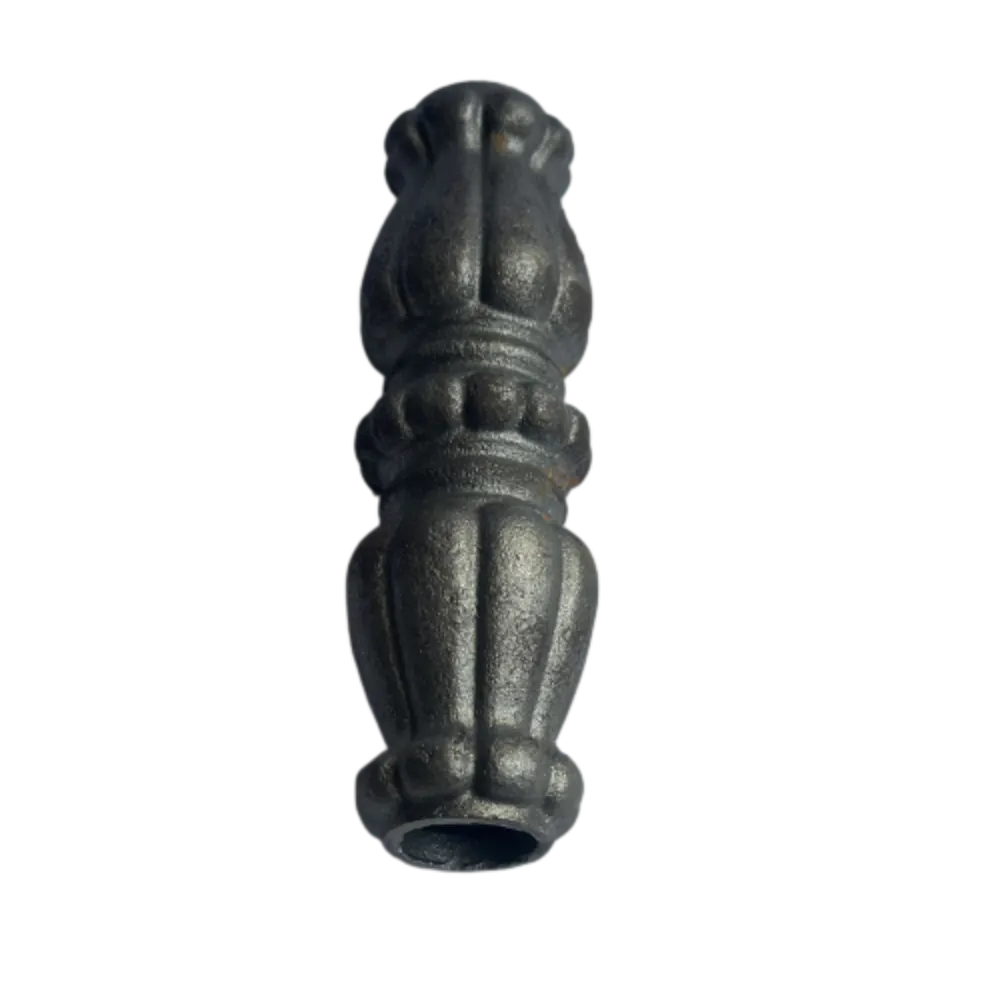Durable Components Made from Wrought Iron for Various Industrial Applications
The Significance and Applications of Wrought Iron Parts
Wrought iron, characterized by its malleability and ductility, has played a significant role in the development of various industries since ancient times. Unlike cast iron, which is hard and brittle, wrought iron is forged and shaped through mechanical processes, resulting in a material that can be crafted into intricate designs and functional components. This article delves into the fascinating world of wrought iron parts, exploring their properties, historical significance, and modern applications.
Properties of Wrought Iron
Wrought iron is primarily composed of iron with a small amount of carbon (usually less than 0.1%), which enhances its strength without compromising its ductility. The presence of fibrous slag inclusions, which occur during the manufacturing process, contributes to its toughness and makes it resistant to rust and corrosion. Unlike other forms of iron, wrought iron can withstand significant manipulation and deformation, allowing artisans and engineers to create parts that meet specific structural and aesthetic needs.
The unique combination of strength and malleability makes wrought iron an ideal material for various applications. Its ability to be heat-treated enables the production of components that not only withstand high stress but also retain their shape after heavy loads. Additionally, wrought iron has excellent welding properties, meaning it can be easily joined to other iron parts, making it a popular choice in construction and fabrication.
Historical Significance
Historically, wrought iron has been a cornerstone material in human civilization. Ancient blacksmiths transformed raw iron ore into workable material long before the advent of modern steelmaking processes. The use of wrought iron can be traced back to at least 1200 BC, where it was utilized for tools, weapons, and various domestic items.
During the Industrial Revolution, wrought iron played a crucial role in the construction of buildings, bridges, and railways. Its strength and flexibility allowed for the creation of robust structures that supported the weight of expanding urban populations and industrial machinery. Architectural masterpieces such as the Eiffel Tower and various Victorian-era buildings prominently featured wrought iron as a key structural and ornamental element.
wrought iron parts

Modern Applications
In contemporary times, the versatility of wrought iron parts continues to thrive in various sectors. One of the most prominent applications is in the construction and architectural industries, where wrought iron is used for railings, gates, and decorative elements. Its ability to be forged into ornate designs lends itself to aesthetic applications, contributing to the beauty of both residential and commercial structures.
In furniture design, wrought iron is favored for its durability and classic appearance. Pieces such as tables, chairs, and light fixtures can be crafted to reflect a blend of traditional and modern design elements. The natural finish of wrought iron adds a rustic charm, making it a preferred choice for both indoor and outdoor furniture.
Wrought iron is also widely used in manufacturing industrial components. Its ability to withstand wear and tear while maintaining structural integrity makes it suitable for gears, couplings, and other mechanical parts. Additionally, in the automotive industry, wrought iron is utilized in the production of components that require a high strength-to-weight ratio, enhancing vehicle performance without compromising safety.
Moreover, wrought iron has found a niche in modern art and sculpture. Artists and designers appreciate its sculptural potential, using it as a medium to create striking works that explore form, texture, and light. The organic qualities of wrought iron allow for innovative expressions that challenge conventional boundaries of art.
Conclusion
Wrought iron parts remain an essential element in various industries, combining historical significance with modern utility. Its unique properties, aesthetic flexibility, and strength ensure that wrought iron will continue to be a vital material for artisans, engineers, and architects alike. As we move forward, the ability to adapt and innovate with wrought iron will pave the way for new applications, solidifying its place in both history and the future of material science. Whether in the fabrication of ornate gates, sturdy furniture, or complex machinery, wrought iron's legacy endures, reminding us of the craftsmanship and ingenuity that has shaped our world.
-
Wrought Iron Components: Timeless Elegance and Structural StrengthNewsJul.28,2025
-
Window Hardware Essentials: Rollers, Handles, and Locking SolutionsNewsJul.28,2025
-
Small Agricultural Processing Machines: Corn Threshers, Cassava Chippers, Grain Peelers & Chaff CuttersNewsJul.28,2025
-
Sliding Rollers: Smooth, Silent, and Built to LastNewsJul.28,2025
-
Cast Iron Stoves: Timeless Heating with Modern EfficiencyNewsJul.28,2025
-
Cast Iron Pipe and Fitting: Durable, Fire-Resistant Solutions for Plumbing and DrainageNewsJul.28,2025
-
 Wrought Iron Components: Timeless Elegance and Structural StrengthJul-28-2025Wrought Iron Components: Timeless Elegance and Structural Strength
Wrought Iron Components: Timeless Elegance and Structural StrengthJul-28-2025Wrought Iron Components: Timeless Elegance and Structural Strength -
 Window Hardware Essentials: Rollers, Handles, and Locking SolutionsJul-28-2025Window Hardware Essentials: Rollers, Handles, and Locking Solutions
Window Hardware Essentials: Rollers, Handles, and Locking SolutionsJul-28-2025Window Hardware Essentials: Rollers, Handles, and Locking Solutions -
 Small Agricultural Processing Machines: Corn Threshers, Cassava Chippers, Grain Peelers & Chaff CuttersJul-28-2025Small Agricultural Processing Machines: Corn Threshers, Cassava Chippers, Grain Peelers & Chaff Cutters
Small Agricultural Processing Machines: Corn Threshers, Cassava Chippers, Grain Peelers & Chaff CuttersJul-28-2025Small Agricultural Processing Machines: Corn Threshers, Cassava Chippers, Grain Peelers & Chaff Cutters












